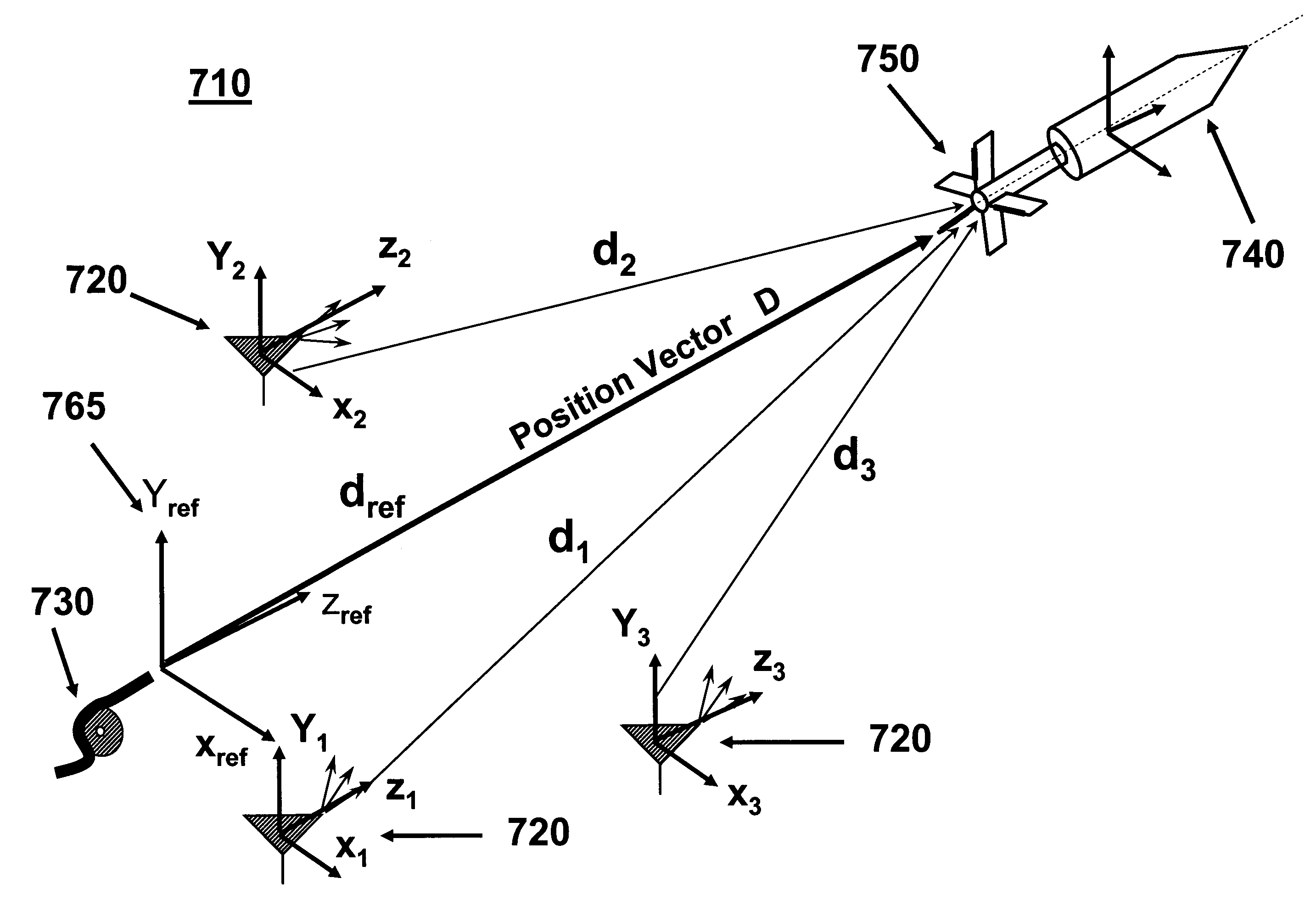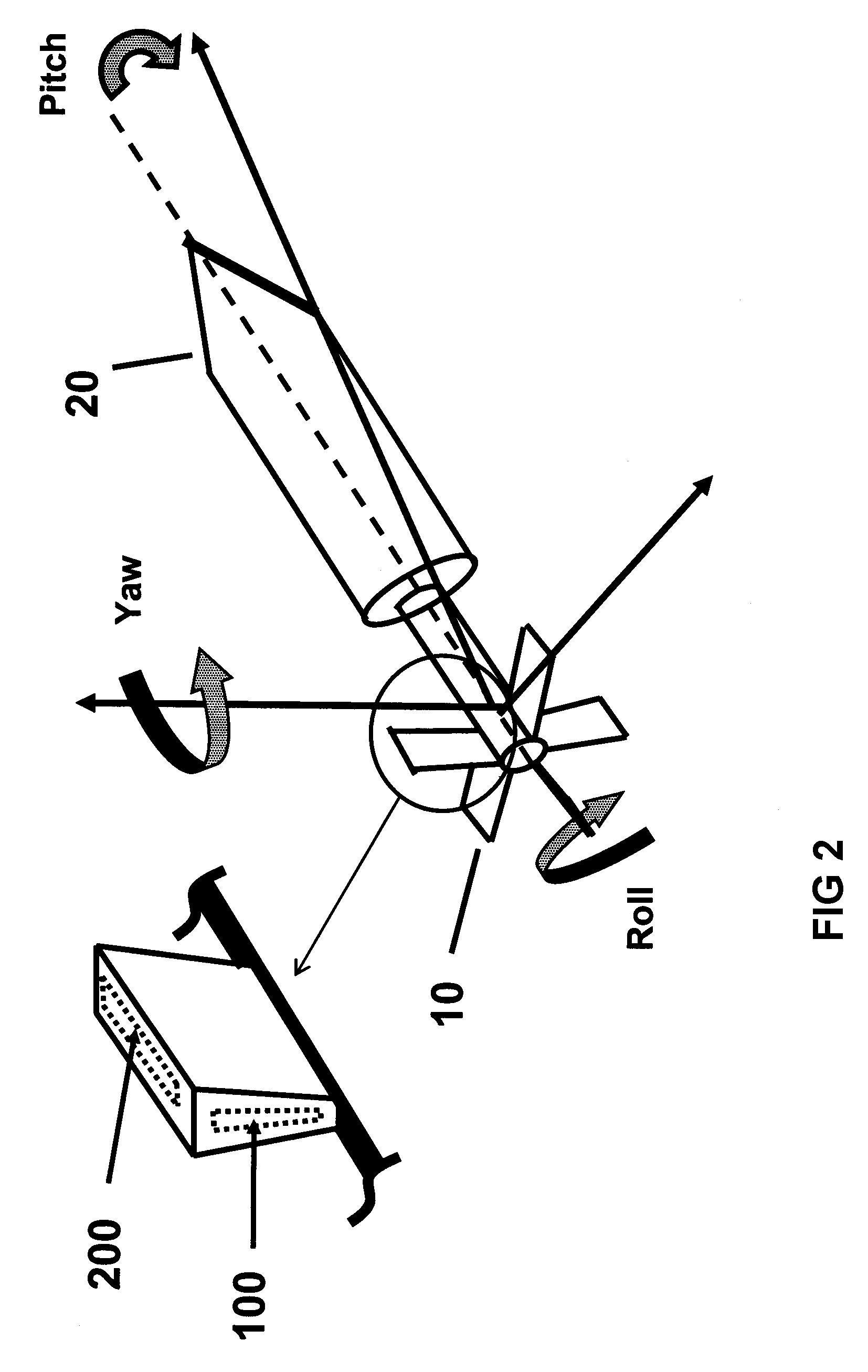System and method for the measurement of full relative position and orientation of objects
a technology of object relative position and measurement method, applied in direction controllers, instruments, using reradiation, etc., can solve the problems of large amount of power required for their operation, large amount of printed or placed antenna based sensors, and inability to meet the requirements of munitions applications
- Summary
- Abstract
- Description
- Claims
- Application Information
AI Technical Summary
Benefits of technology
Problems solved by technology
Method used
Image
Examples
Embodiment Construction
[0036]FIGS. 1 and 2 illustrate an autonomous onboard position and orientation measurement system (hereinafter also referred to as “position and orientation sensor”) 10 for an object (in this case a munition) 20. The present invention has particular utility where the object is a munition for tracking such munition during flight. However, those skilled in the art will appreciate that the system and methods of the present invention are useful with other types of objects, for example for onboard measurement of the position and orientation of a mobile robotic platform relative to the ground (for a fixed illuminating source) or another mobile robotic platform (on which the illuminating source is affixed) for navigational purposes; for measurement of full position and orientation of a vehicle as being tested for suspension performance, and in general, in any system or device in which the position and orientation of the system or device is to be measured relative to a fixed (ground) or movi...
PUM
 Login to View More
Login to View More Abstract
Description
Claims
Application Information
 Login to View More
Login to View More - R&D
- Intellectual Property
- Life Sciences
- Materials
- Tech Scout
- Unparalleled Data Quality
- Higher Quality Content
- 60% Fewer Hallucinations
Browse by: Latest US Patents, China's latest patents, Technical Efficacy Thesaurus, Application Domain, Technology Topic, Popular Technical Reports.
© 2025 PatSnap. All rights reserved.Legal|Privacy policy|Modern Slavery Act Transparency Statement|Sitemap|About US| Contact US: help@patsnap.com



